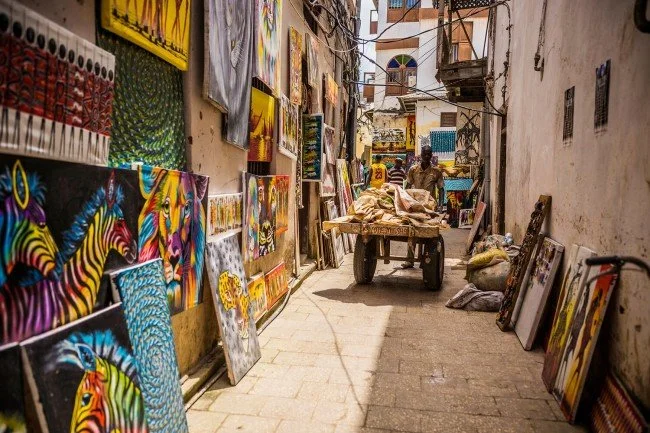Zanzibar: The Beating Heart of Swahili Culture
By: Chimdindu Ken-Anaukwu
Forget everything you’ve heard about Zanzibar being just a tropical paradise. Yes, the beaches are heavenly. Yes, the sunsets look like they were Photoshopped by angels. But Zanzibar isn’t just beautiful—it’s culturally electric.
This island is the beating heart of Swahili culture—a place where Arabic, African, Indian, and Persian influences mix like perfectly spiced pilau. And the result? A culture so rich it deserves its own passport.
Let’s take a trip beyond the Instagram filters and dive into why Zanzibar is the living soul of the Swahili world
1. Stone Town: The Swahili Time Machine
Stone Town isn’t just a UNESCO World Heritage Site—it’s a full-blown museum you can walk through (and get lost in).
Narrow, winding alleyways with doors older than your grandma’s recipes.
Ornate wooden carvings that whisper stories of Omani sultans and coastal queens.
Mosques, markets, and mansions packed like cloves in a spice bag.
If you want to feel the Swahili spirit, get lost here—and don’t use Google Maps. Let the town talk to you.
2. Language That Flows Like the Tide
Zanzibar is the birthplace of Kiswahili sanifu—standard Swahili. The way they speak here? Pure, melodic, and seasoned like the perfect biryani.
It’s no coincidence that Zanzibar is where Swahili poets, scholars, and musicians have thrived. The language here isn’t just spoken—it’s sung, debated, and danced.
Pro tip: Ask a Zanzibari the meaning of a proverb, and you might get a whole TED Talk in response.
3. Spices, Souls, and Stories
The spice trade didn’t just flavor Zanzibar’s food—it flavored its identity.
Clove, cinnamon, cardamom, turmeric—you can smell history in the air.
Families still pass down spice-blending secrets like sacred texts.
Food isn’t just a meal here. It’s poetry. It’s politics. It’s personality.
Order a plate of urojo (Zanzibar mix), and you’re tasting centuries of cultural fusion.
4. Taarab Music: Swahili Soul in Song
Zanzibar’s sound? Taarab.
A genre that fuses Arabic instruments, Swahili poetry, and East African flair. Think violins, ouds, and lyrics that can bless or roast you in one verse.
Performed at weddings, festivals, and friendly showdowns—taarab is emotional therapy Swahili-style.
5. Swahili Dress Code: Modest, Majestic, and Meaningful
Zanzibar’s style is a visual language. Flowing buibui, intricately wrapped kanga, majestic kanzu—each garment speaks identity and intention.
Modesty doesn’t mean boring. Here, it means grace, elegance, and perfectly matched headwraps that could probably get Wi-Fi signal.
6. Festivals that Set the Island Alight
Zanzibar doesn’t do boring. The island bursts into cultural flame during events like:
Sauti za Busara – East Africa’s biggest music festival
Zanzibar International Film Festival (ZIFF) – A visual feast of African storytelling
Mwaka Kogwa – A traditional Shirazi festival that blends celebration, fire, and symbolic fighting (yes, fighting!)
It’s not just celebration—it’s cultural preservation with drums.
Final Thoughts
Zanzibar isn’t just a location on a map. It’s a living, breathing temple of Swahili culture. From its rhythm to its recipes, its language to its laughter, the island isn’t just Swahili—it defines Swahili.
So the next time someone says “Zanzibar? That beach place?” You tell them: “Yes. But it’s also where culture never sleeps.”
Want to understand more Swahili culture from the inside? Download the NKENNE app and start speaking the language of the island.
Karibu Zanzibar. The soul of Swahili is calling.










